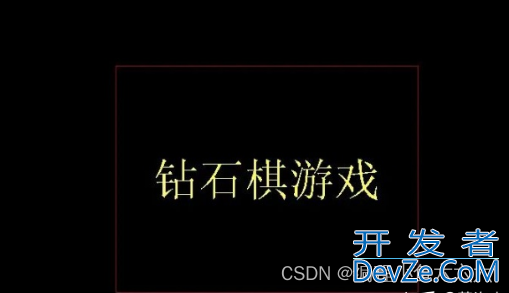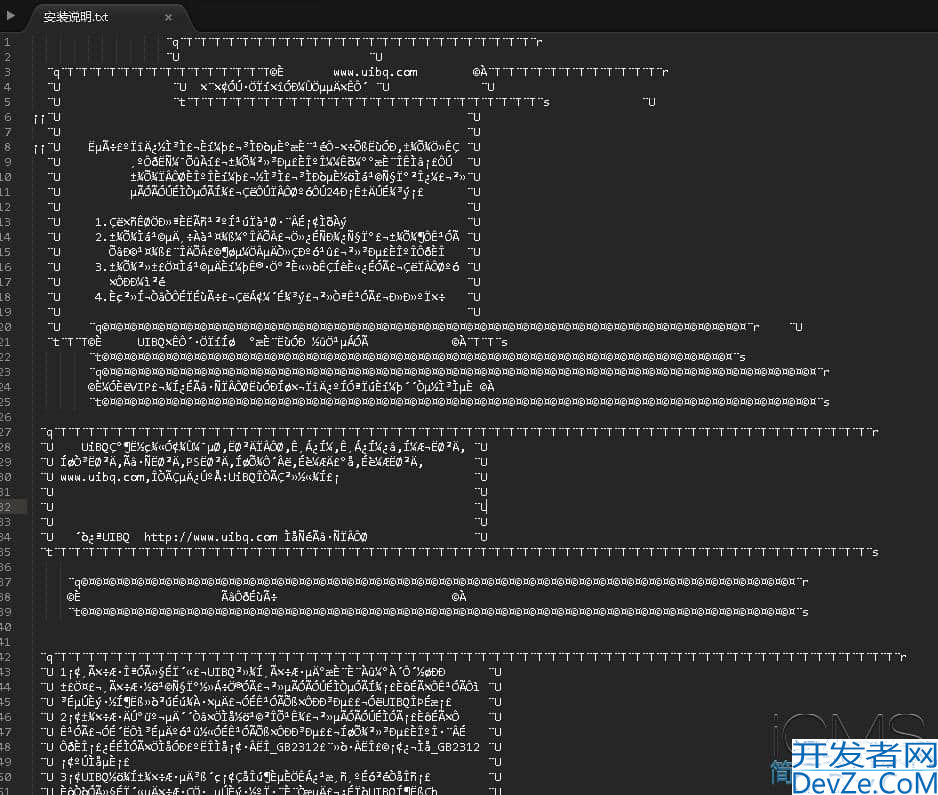C#如何优雅地取消进程的执行之Cancellation详解
目录
- 概述
- 与取消线程相关的类型
- 代码举例
- 操作取消vs对象取消
- 监听并响应取消请求
- 轮询监听
- 通过回调注册进行监听
- 使用WaitHandle进行侦听
- 同时监听多个令牌
- 总结
概述
从.NET Framework 4开始,.NET使用统一的模型来协作取消异步或长时间运行的同步线程。该模型基于一个称为CancellationToken的轻量级对象。这个对象在调用一个或多个取消线程时(例如通过创建新线程或任务),是通过将token传递给每个线程来完成的(通过链式的方式依次传递)。单个线程能够依次地将token的副本传递给其他线程。
之后,在适当的某个时机,创建token的对象就可以使用token来请求线程停止。只有请求对象可以发出取消请求,每个监听器负责监听到请求并以适当和及时的方式响应取消请求。
实现协作取消模型的一般模式是:
- 1、实例化一个CancellationTokenSource对象,该对象管理cancellation并将cancellation通知发送给单独的cancellation token。
- 2、CancellationTokenSource对象的Token属性,可以返回一个Token对象,我们可以将该Token对象发送给每个监听该cancellation的进程或Task。
- 3、为每个任务或线程提供响应取消的机制。
- 4、调用 CancellationTokenSource.Cancel() 方法,来取消线程或者Task。
【tips】我们在使用cancellation的token取消线程后,应该确保调用CancellationTokenSource.Dispose()方法,以便于释放它持有的任何非托管资源。。
下图展示出了CancellationTokenSource对象里的Token属性对象,是如何传递到其他的线程里的。

合作取消模型使创建取消感知的应用程序和库变得更容易,它支持以下功能:
- 1、取消是合式的,不会强加给监听器。监听器确定如何优雅地终止以响应取消请求。
- 2、请求不同于监听。调用可取消的线程的对象,可以控制何时(如果有的话)取消被请求。
- 3、请求的对象,可以通过仅使用一个方法,即可发送取消请求到所有的token副本中。
- 4、监听器可以通过将多个Token连接成一个linked Token,来同时监听多个Token。
- 5、用户代码可以注意到并响应library code的取消请求,而library code可以注意到并响应用户代码的取消请求。
- 6、可以通过轮询、回调注册或等待等待句柄的方式,来通知监听器执行取消请求。
与取消线程相关的类型
取消框架是作为一组相关类型实现的,这些类型在下表中列出。
| CancellationTokenSource | 该对象创建cancellation token,并向 cancellation token的所有副本分发取消请求。 |
| CancellationToken | 传递给一个或多个监听器的轻量级的值类型,通常作为方法参数。侦听器通过轮询、回调或等待句柄监视token的IsCancellationRequested属性的值。 |
| OperationCanceledException | 此异常构造函数的重载,接受CancellationToken作为参数。侦听器可以选择性地抛出此异常以验证取消的来源,并通知其他已响应取消请求监听器。 |
取消模型以几种类型集成到.net中。
最重要的是System.Threading.Tasks.Parallel,System.Threading.Tasks.Task、System.Threading.Tasks.Task<TResult> 和 System.Linq.ParallelEnumerable。
建议使用所有新的库和应用代码来实现合作市取消模式。
代码举例
在下面的示例中,请求对象创建一个CancellationTokenSource对象,然后将该对象的Token属性传递给可取消的进程。
接收请求的线程通过轮询来监视Token的IsCancellationRequested属性的值。
当该值变为true时,侦听器可以以任何合适的方式终止。在本例中,方法只是退出,这是许多情况下所需要的全部内容。
using System;
using System.Threading;
public class Example
{
public static void Main()
{
// Create the token source.
CancellationTokenSource cts = new CancellationTokenSource();
// Pass the token to the cancelable operation.
ThreadPool.QueueUserWorkItem(new WaitCallback(DOSomeWork), cts.Token);
Thread.Sleep(2500);
// Request cancellation.
cts.Cancel();
Console.WriteLine("Cancellation set in token source...");
Thread.Sleep(2500);
// Cancellation should have happened, so call Dispose.
cts.Dispose();
}
// Thread 2: The listener
static void DoSomeWork(object? obj)
{
if (obj is null)
return;
CancellationToken token = (CancellationToken)obj;
for (int i = 0; i < 100000; i++)
{
if (token.IsCancellationRequested)
{
Console.WriteLine("In iteration {0}, cancellation has been requested...",
i + 1);
// Perform cleanup if necessary.
//...
// Terminate the operation.
break;
}
// Simulate some work.
Thread.SpinWait(500000);
}
}
}
// The example displays output like the following:
// Cancellation set in token source...
// In iteration 1430, cancellation has been requested...
操作取消vs对象取消
在协作取消框架中,取消指的是操作(线程中执行的操作),而不是对象。取消请求意味着在执行任何所需的清理后,操作应尽快停止。一个cancellation token应该指向一个“可取消的操作”,无论该操作如何在您的程序中实现。
在token的IsCancellationRequested属性被设置为true之后,它不能被重置为false。因此,取消令牌在被取消后不能被重用。
如果您需要对象取消机制,您可以通过调用CancellationToken来基于操作取消机制。注册方法,如下例所示。
using System;
using System.Threading;
class CancelableObject
{
public string id;
public CancelableObject(string id)
{
this.id = id;
}
public void Cancel()
{
Console.WriteLine("Object {0} Cancel callback", id);
// Perform object cancellation here.
}
}
public class Example1
{
public static void Main()
{
CancellationTokenSource cts = new CancellationTokenSource();
CancellationToken token = cts.Token;
// User defined Class with its own method for cancellation
var obj1 = new CancelableObject("1");
var obj2 = new CancelableObject("2");
var obj3 = new CancelableObject("3");
// Register the object's cancel method with the token's
// cancellation request.
token.Register(() => obj1.Cancel());
token.Register(() => obj2.Cancel());
token.Register(() => obj3.Cancel());
// Request cancellation on the token.
cts.Cancel();
// Call Dispose when we're done with the CancellationTokenSource.
cts.Dispose();
}
}
// The example displays the following output:
// javascriptObject 3 Cancel callback
// Object 2 Cancel callback
// Object 1 Cancel callback
如果一个对象支持多个并发的可取消操作,则可以给每个不同的可取消操作各自传入一个不同的token。这样,一个操作可以被取消而不会影响到其他操作。
监听并响应取消请求
在用户委托中,可取消操作的实现者决定如何终止该操作以响应取消请求。在许多情况下,用户委托可以只执行任何所需的清理,然后立即返回。
但是,在更复杂的情况下,可能需要用户委托通知库代码已发生cancellation。在这种情况下,终止操作的正确方法是委托调用ThrowIfCancellationRequested方法,这将导致抛出OperationCanceledException异常。库代码可以在用户委托线程上捕获此异常,并检查异常的token,以确定该异常是否表示协作取消或其他异常情况。
在这种情况下,终止操作的正确方法是委托调用ThrowIfCancellationRequested方法,这将导致抛出OperationCanceledException。库代码可以在用户委托线程上捕获此异常,并检查异常的token,以确定该异常是否表示协作取消或其他异常情况。
轮询监听
对于循环或递归的长时间运行的计算,可以通过定期轮询CancellationToken.IsCancellationRequested的值来监听取消请求。如果它的值为true,则该方法应该尽快清理并终止。轮询的最佳频率取决于应用程序的类型。开发人员可以为任何给定的程序确定最佳轮询频率。轮询本身不会显著影响性能。
下面的程序案例展示了一种可能的轮询方式。
static void NestedLoops(Rectangle rect, CancellationToken token)
{
for (int col = 0; col < rect.columns && !token.IsCancellationRequested; col++) {
// Assume that we know that the inner loop is very fast.
// Therefore, polling once per column in the outer loop condition
// is sufficient.
for (int row = 0; row < rect.rows; row++) {
// Simulating work.
Thread.SpinWait(5_000);
Console.Write("{0},{1} ", col, row);
}
}
if (token.IsCancellationRequested) {
// Cleanup or undo here if necessary...
Console.WriteLine("\r\nOperation canceled");
Console.WriteLine("Press any key to exit.");
// If using Task:
// token.ThrowIfCancellationRequested();
}
}
下面的程序代码是一个详细的实现:
using System;
using System.Threading;
public class ServerClass
{
public static void StaticMethod(object obj)
{
CancellationToken ct = (CancellationToken)obj;
Console.WriteLine("ServerClass.StaticMethod is running on another thread.");
// Simulate work that can be canceled.
while (!ct.IsCancellationRequested) {
Thread.SpinWait(50000);
}
Console.WriteLine("The worker thread has been canceled. Press any key to exit.");
Console.ReadKey(true);
}
}
public class Simple
{
public static void Main()
{
// The Simple class controls Access to the token source.
CancellationTokenSource cts = new CancellationTokenSource();
Console.WriteLine("Press 'C' to terminate the application...\n");
// Allow the UI thread to capture the token source, so that it
// can issue the cancel command.
Thread t1 = new Thread(() => { if (Console.ReadKey(true).KeyChar.ToString().ToUpperInvariant() == "C")
cts.Cancel(); } );
// ServerClass sees only the token, not the token source.
Thread t2 = new Thread(new ParameterizedThreadStart(ServerClass.StaticMethod));
// Start the UI thread.
t1.Start();
// Start the worker thread and pass it the token.
t2.Start(cts.Token);
t2.Join();
cts.Dispose();
}
}
// The example displays the following output:
// Press 'C' to terminate the application...
//
// js ServerClass.StaticMethod is running on another thread.
// The worker thread has been canceled. Press any key to exit.
通过回调注册进行监听
以这种方式进行的某些python操作可能会阻塞,从而无法及时检查cancellation token的值。对于这些情况,您可以注册一个回调方法,以便在收到取消请求时解除对该方法的阻塞。
Register方法返回一个专门用于此目的的CancellationTokenRegistration对象。下面的示例展示了如何使用Register方法来取消异步Web请求。
using System;
using System.Net;
using System.Threading;
class Example4
{
static void Main()
{
CancellationTokenSource cts = new CancellationTokenSource();
StartWebRequest(cts.Token);
// cancellation will cause the web
// request to be cancelled
cts.Cancel();
}
static void StartWebRequest(CancellationToken token)
{
WebClient wc = new WebClient();
wc.DownloadStringCompleted += (s, e) => Console.WriteLine("Request completed.");
// Cancellation on the token will
// call CancelAsync on the WebClient.
token.Register(() =>
{
wc.CancelAsync();
Console.WriteLine("Request cancelled!");
});
Console.WriteLine("Starting request.");
wc.DownloadStringAsync(new Uri("http://www.contoso.com"));
}
}
CancellationTokenRegistration对象管理线程同步,并确保回调将在精确的时间点停止执行。
为了确保系统响应ZfUIQeyZbn性并避免死锁,在注册回调时必须遵循以下准则:
1、回调方法应该是快速的,因为它是同步调用的,因此对Cancel的调用在回调返回之前不会返回。
2、如果在回调运行时调用Dispose,并且持有回调等待的锁,则程序可能会死锁。Dispose返回后,您可以释放回调所需的任何资源。
3、Callbacks 不应该执行任何手动线程或在回调中使用SynchronizationContext。如果回调必须在特定线程上运行,则使用System.Threading.CancellationTokenRegistration构造函数,该构造函数使您能够指定目标syncContext是活动的SynchronizationContext.Current。在回调中执行手动线程会导致死锁。
使用WaitHandle进行侦听
当一个可取消的操作在等待一个同步原语(如System.Threading. manualresetevent或System.Threading. Semaphore)时可能会阻塞。
你可以使用CancellationToken.WaitHandle属性,以使操作同时等待事件和取消请求。
CancellationToken的 等待句柄 将在响应取消请求时发出信号,该方法可以使用WaitAny()方法的返回值来确定发出信号的是否是cancellation token。然后操作可以直接退出,或者抛出OperationCanceledException异常。
// Wait on the event if it is not signaled.
int eventThatSignaledIndex =
WaitHandle.WaitAny(new WaitHandle[] { mre, token.WaitHandle },
new TimeSpan(0, 0, 20));
System.Threading.ManualResetEventSlim和System.Threading.SemaphoreSlim都在它们的Wait()方法中支持取消框架。
您可以将CancellationToken传递给该方法,当请求取消时,事件将被唤醒并抛出OperationCanceledException。
try
{
// mres is a ManualResetEventSlim
mres.Wait(token);
}
catch (OperationCanceledException)
{
// Throw immediately to be responsive. The
// alternative is to do one more item of work,
// and throw on next iteration, because
// IsCancellationRequested will be true.
Console.WriteLine("The wait operation was canceled.");
throw;
}
Console.Write("Working...");
// Simulating work.
Thread.SpinWait(500000);
下面的示例使用ManualResetEvent来演示如何解除阻塞不支持统一取消的等待句柄。
using System;
using System.Threading;
using System.Threading.Tasks;
class CancelOldStyleEvents
{
// Old-style MRE that doesn't support unified cancellation.
static ManualResetEvent mre = new ManualResetEvent(false);
static void Main()
{
var cts = new CancellationTokenSource();
// Pass the same token source to the delegate and to the task instance.
Task.Run(() => DoWork(cts.Token), cts.Token);
Console.WriteLine("Press s to start/restart, p to pause, or c to cancel.");
Console.WriteLine("Or any other key to exit.");
// Old-style UI thread.
bool goAgain = true;
while (goAgain)
{
char ch = Console.ReadKey(true).KeyChar;
switch (ch)
{
case 'c':
cts.Cancel();
break;
case 'p':
mre.Reset();
break;
case 's':
mre.Set();
break;
default:
goAgain = false;
break;
}
Thread.Sleep(100);
}
cts.Dispose();
}
static void DoWork(CancellationToken token)
{
while (true)
{
// Wait on the event if it is not signaled.
int eventThatSignaledIndex =
WaitHandle.WaitAny(new WaitHandle[] { mre, token.WaitHandle },
new TimeSpan(0, 0, 20));
// Were we canceled while waiting?
if (eventThatSignaledIndex == 1)
{
Console.WriteLine("The wait operation was canceled.");
throw new OperationCanceledException(token);
}
// Were we canceled while running?
else if (token.IsCancellationRequested)
{
Console.WriteLine("I was canceled while running.");
token.ThrowIfCancellationRequested();
}
// Did we time out?
else if (eventThatSignaledIndex == WaitHandle.WaitTimeout)
{
Console.WriteLine("I timed out.");
break;
}
else
{
Console.Write("Working... ");
// Simulating work.
Thread.SpinWait(5000000);
}
}
}
}
下面的示例使用ManualResetEventSlim来演示如何解除支持统一取消的协调原语的阻塞。同样的方法也可以用于其他轻量级协调原语,如SemaphoreSlim和CountdownEvent。
using System;
using System.Threading;
using System.Threading.Tasks;
class CancelNewStyleEvents
{
// New-style MRESlim that supports unified cancellation
// in its Wait methods.
static ManualResetEventSlim mres = new ManualResetEventSlim(false);
static void Main()
{
var cts = new CancellationTokenSource();
// Pass the same token source to the delegate and to the task instance.
Task.Run(() => DoWork(cts.Token), cts.Token);
Console.WriteLine("Press c to cancel, p to pause, or s to start/restart,");
Console.WriteLine("or any other key to exit.");
// New-style UI thread.
bool goAgain = true;
编程客栈 while (goAgain)
{
char ch = Console.ReadKey(true).KeyChar;
switch (ch)
{
case 'c':
// Token can only be canceled once.
cts.Cancel();
break;
case 'p':
mres.Reset();
break;
case 's':
mres.Set();
break;
default:
goAgain = false;
break;
}
Thread.Sleep(100);
}
cts.Dispose();
}
static void DoWork(CancellationToken token)
{
while (true)
{
if (token.IsCancellationRequested)
{
Console.WriteLine("Canceled while running.");
token.ThrowIfCancellationRequested();
}
// Wait on the event to be signaled
// or the token to be canceled,
// whichever comes first. The token
// will throw an exception if it is canceled
// while the thread is waiting on the event.
try
{
// mres is a ManualResetEventSlim
mres.Wait(token);
}
catch (OperationCanceledException)
{
// Throw immediately to be responsive. The
// alternative is to do one more item of work,
// and throw on next iteration, because
// IsCancellationRequested will be true.
Console.WriteLine("The wait operation was canceled.");
throw;
}
Console.Write("Working...");
// Simulating work.
Thread.SpinWait(500000);
}
}
}
同时监听多个令牌
在某些情况下,侦听器必须同时侦听多个cancellation token。
例如,一个可取消操作除了监控通过方法形参传入的外部token之外,还可能必须监视内部的cancellation token。为此,创建一个linked token源,它可以将两个或多个token连接到一个token中,如下面的示例所示。
using System;
using System.Threading;
using System.Threading.Tasks;
class LinkedTokenSourceDemo
{
static void Main()
{
WorkerWithTimer worker = new WorkerWithTimer();
CancellationTokenSource cts = new CancellationTokenSource();
// Task for UI thread, so we can call Task.Wait wait on the main thread.
Task.Run(() =>
{
Console.WriteLine("Press 'c' to cancel within 3 seconds after work begins.");
Console.WriteLine("Or let the task time out by doing nothing.");
if (Console.ReadKey(true).KeyChar == 'c')
cts.Cancel();
});
// Let the user read the UI message.
Thread.Sleep(1000);
// Start the worker task.
Task task = Task.Run(() => worker.DoWork(cts.Token), cts.Token);
try
{
task.Wait(cts.Token);
}
catch (OperationCanceledException e)
{
if (e.CancellationToken == cts.Token)
Console.WriteLine("Canceled from UI thread throwing OCE.");
}
catch (AggregateException ae)
{
Console.WriteLine("AggregateException caught: " + ae.InnerException);
foreach (var inner in ae.InnerExceptions)
{
Console.WriteLine(inner.Message + inner.Source);
}
}
Console.WriteLine("Press any key to exit.");
Console.ReadKey();
cts.Dispose();
}
}
class WorkerWithTimer
{
CancellationTokenSource internalTokenSource = new CancellationTokenSource();
CancellationToken internalToken;
CancellationToken externalToken;
Timer timer;
public WorkerWithTimer()
{
// A toy cancellation trigger that times out after 3 seconds
// if the user does not press 'c'.
timer = new Timer(new TimerCallback(CancelAfterTimeout), null, 3000, 3000);
}
public void DoWork(CancellationToken externalToken)
{
// Create a new token that combines the internal and external tokens.
this.internalToken = internalTokenSource.Token;
this.externalToken = externalToken;
using (CancellationTokenSource linkedCts =
CancellationTokenSource.CreateLinkedTokenSource(internalToken, externalToken))
{
try
{
DoWorkInternal(linkedCts.Token);
}
catch (OperationCanceledException)
{
if (internalToken.IsCancellationRequested)
{
Console.WriteLine("Operation timed out.");
}
else if (externalToken.IsCancellationRequested)
{
Console.WriteLine("Cancelling per user request.");
externalToken.ThrowIfCancellationRequested();
}
}
}
}
private void DoWorkInternal(CancellationToken token)
{
for (int i = 0; i < 1000; i++)
{
if (token.IsCancellationRequested)
{
// We need to dispose the timer if cancellation
// was requested by the external token.
timer.Dispose();
// Throw the exception.
token.ThrowIfCancellationRequested();
}
// Simulating work.
Thread.SpinWait(7500000);
Console.Write("working... ");
}
}
public void CancelAfterTimeout(object? state)
{
Console.WriteLine("\r\nTimer fired.");
internalTokenSource.Cancel();
timer.Dispose();
}
}
注意,当您完成对链接的令牌源的处理后,必须对它调用Dispose。
当linked token抛出一个操作消连时,传递给异常的token就是linked token,而不是前任token。为了确定token的哪个被取消,请直接检查前任token的状态。
在本例中,AggregateException不应该被抛出,但这里会捕获它,因为在实际场景中,除了从任务委托抛出的OperationCanceledException之外,任何其他异常都被包装在AggregateException中。
总结
以上为个人经验,希望能给大家一个参考,也希望大家多多支持编程客栈(www.devze.com)。







 加载中,请稍侯......
加载中,请稍侯......
精彩评论